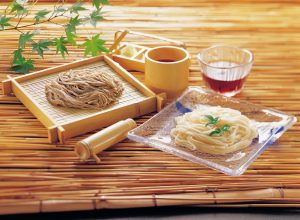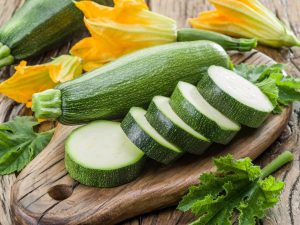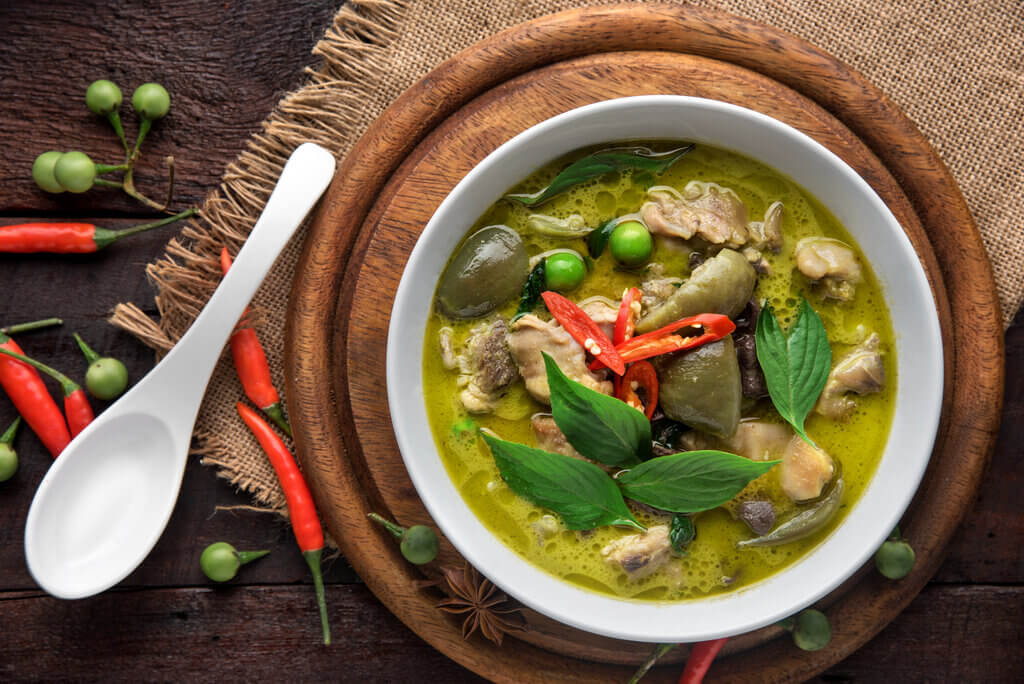
Curry is one of the staple Thai dishes that has grown in popularity alongside other classics like pad thai and tom yum. Most Thai curries like red and green curry feature the same, if not similar, ingredients in the paste. So, red curry vs green curry — what exactly is the difference?
Read on as we help you unpack the distinctions between the two types of curries. We’ll discuss their differences in ingredients, taste, and spice level to help you decide which is better suited for you!
What Is the Difference Between Red Curry vs Green Curry?
Aside from the apparent color difference, red curry and green curry also diverge in terms of chilies used, heat levels, and taste.
Different Chilies Used
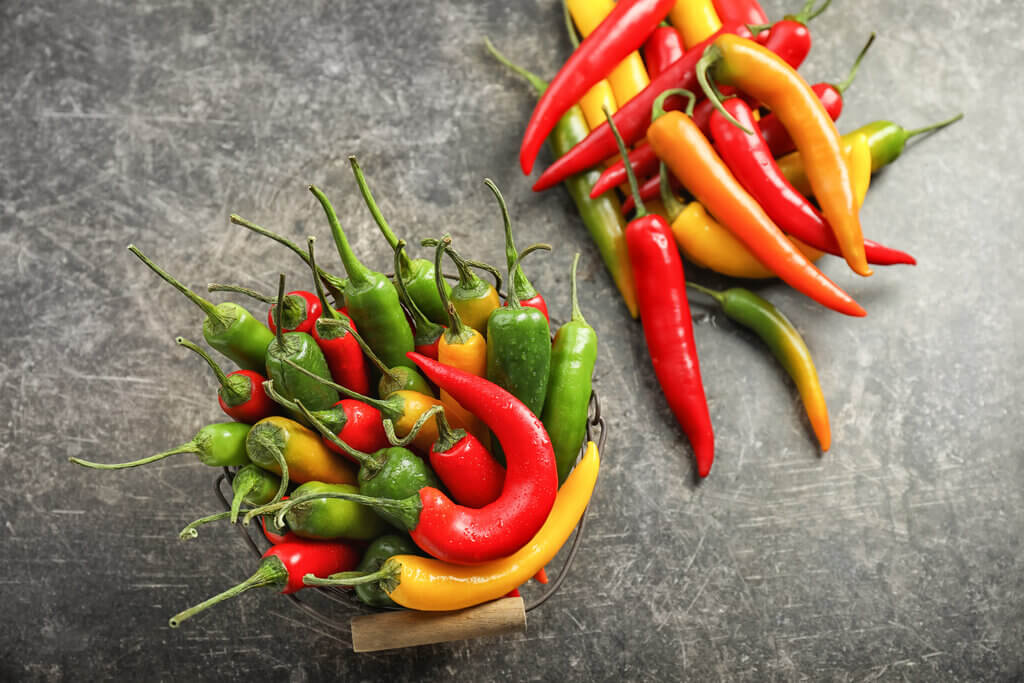
Traditionally, Thai curries are all cooked with coconut milk and the same, if not similar, ingredients for the curry paste. What sets the different types of curry apart is the type of chilies used in the pastes. Red curry uses dried red chilies while green curry uses fresh green chilies.
Red curry is traditionally made with plenty of dried red chilies. These chilies are soaked and pounded with the rest of the paste to extract the distinct color and heat. Sometimes the chilies are replaced with chili powder or even tomato sauce for a deeper flavor and color. Alongside the chilies, there is also garlic, galangal, shallots, lemongrass, and makrut lime peel and leaves. Shrimp paste or fish sauce and spices such as cumin seeds, coriander seeds, and roots are also incorporated into red curry pastes.
On the other hand, the vibrant green color in green curry is due to green chilies, coriander or cilantro, basil, and the leaf and peel of makrut lime used. Aside from these fresh ingredients, the standard base ingredients include lemongrass, galangal (Thai ginger), shallots, garlic, and fish sauce to complete the green curry paste.
Green Curry Is Spicier
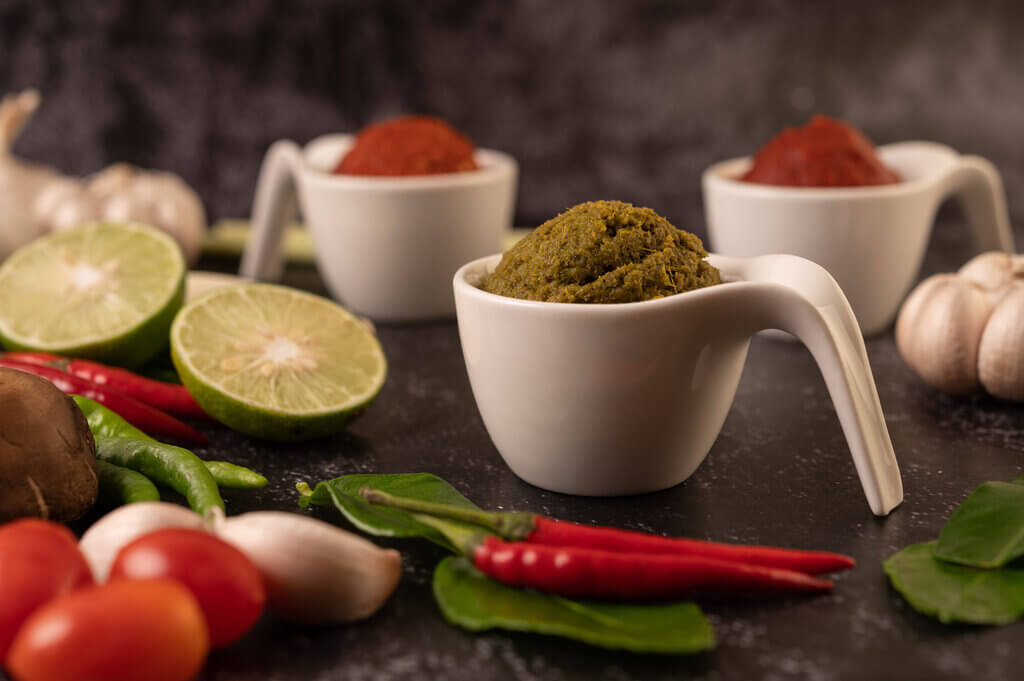
Spicy green curry paste
Now, which is hotter, red curry or green curry? You may think that Thai red curry is hotter. However, Thai green curry is actually spicier. This misconception happens as Western versions of Thai red curry are sometimes made with fresh red chilies like cayenne pepper which has a heat level of 30,000-50,000 SHU. These chilies are spicier than Chifa (5000-30,000 SHU), the Thai dried red spur chilies typically used in Thai red curry. In this case, this explains why you might find red curry pastes spicer.
But generally, green curry is considered the spiciest among all the other types of curry in Thailand. Most green curries like this Thai green curry usually pack a meaner punch since it uses a combination of fresh green chilies and the addition of bird’s eye chilies (50,000-100,000 SHU).
Of course, other factors play a role in the spiciness of any Thai curries. Considering the number of chilies a recipe asks for or the amount of coconut milk or cream added to the dish can also determine the heat of the dish. So, depending on the cook or the recipe used, spice levels can vary.
Red Curry Tastes Different From Green Curry
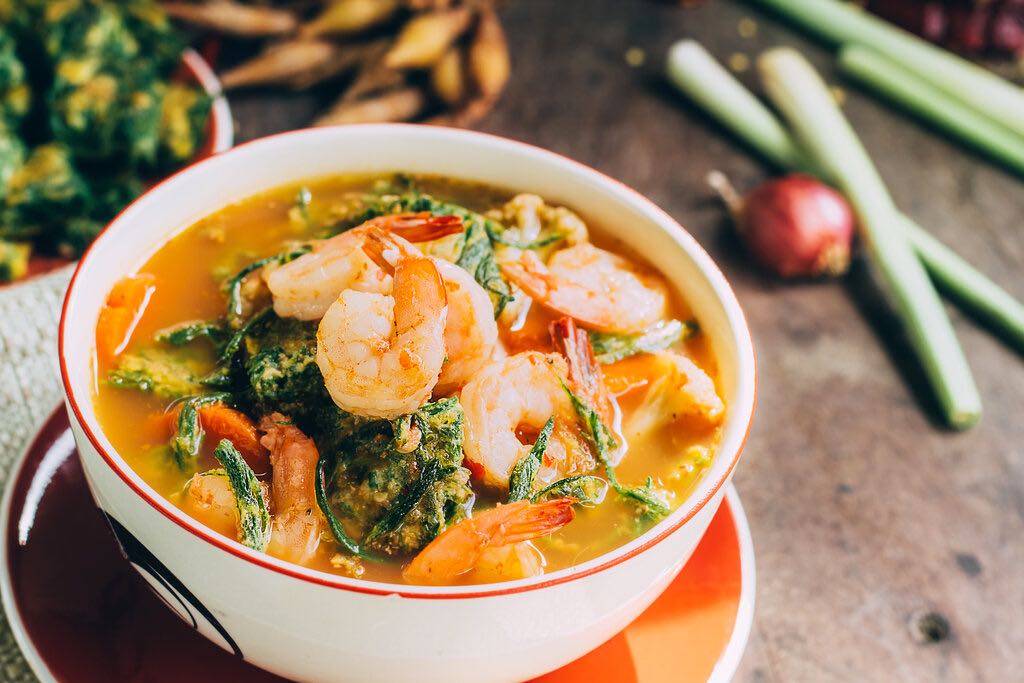
When comparing red vs green curry, you’ll find that both share similar base ingredients in the paste. Although the most apparent difference to note is the addition of fresh herbs and chilies in green curry which gives it a completely different flavor profile.
Red curry has a bit more depth and boldness due to the red chilies used. Highlighting its savory taste, ginger and garlic notes are the most notable flavors in red curry. It’s not as complex as green curry, however, this makes it more versatile and is used more often in Thai dishes.
Meanwhile, green curry paste includes coriander and basil in the mix which makes green curry more fragrant and flavorful. The leaf and peel of makrut lime also make the dish taste brighter and sharper. Recipes using green curry usually feature beef, chicken, or fish dumplings. But tofu, veggies, and seafood also work well with their bright flavor like in a Thai shrimp curry.
- If you're not a fan of the bold flavor of Thai curries, perhaps a more toned-down curry, like massaman curry will better suit your taste. Massaman curry combines the flavors of Thai, Indian, and Malay cuisine in the mix. This mild curry is sweeter and slightly tangy which would likely satisfy your taste buds.
Red Curry vs Green Curry vs Yellow Curry
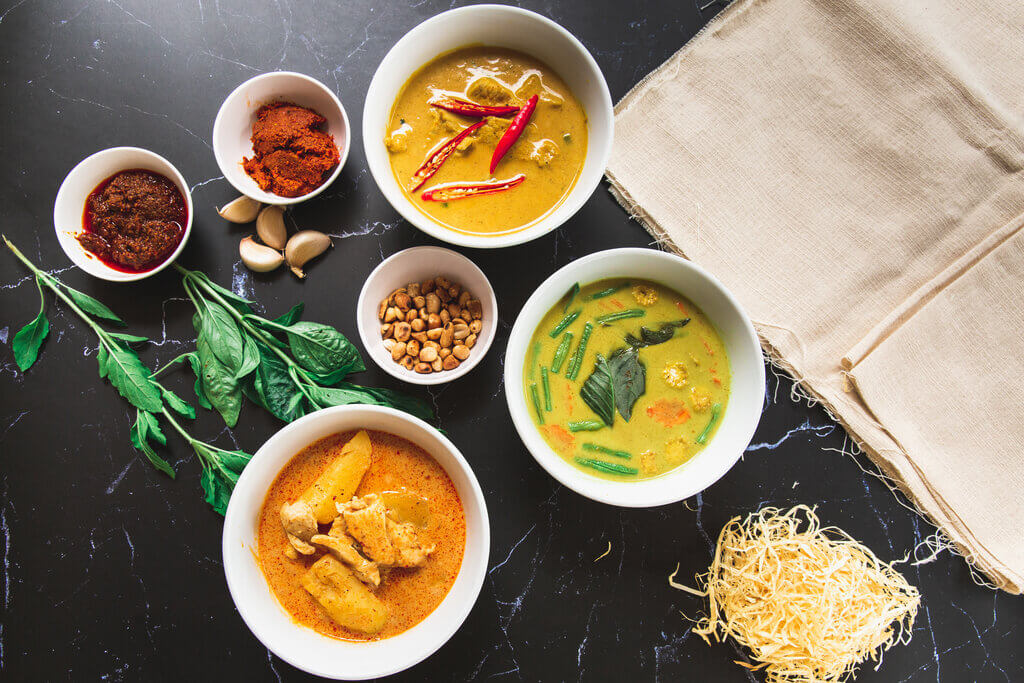
Since we’re tackling the red curry vs green curry debacle, we ought to mention another popular type of curry: yellow curry. This variation of Thai curry has unique qualities compared to both red and green curries. When it comes to red vs green vs yellow curry, well, the most obvious difference is in its color. To make Thai yellow curry, we’d usually use yellow peppers and turmeric. The latter is an essential ingredient in the paste which gives it its golden-yellow color.
In terms of heat, yellow curry is the mildest of Thai curries. It is sweeter in taste and has a more mellow heat level. Along with the turmeric, the basic components for this one are similar to the other curry pastes. It features basic curry paste ingredients such as galangal, garlic, coriander seeds, cumin, and lemongrass. This paste is also often cooked with coconut milk in stocks, stews, or in rice dishes often accompanying chicken, lamb, and even seafood.
On another note, this bright curry can also be confused with Indian curries like a rogan josh (Indian lamb curry recipe) since the latter also gets its golden-yellow hue from turmeric. However, Indian curry is significantly different from Thai curries, in the spices used, ingredients, flavor, and preparation.
READ ALSO: 27 Delicious Indian Dinner Recipes You Have to Try
Red Curry vs Green Curry: Which Is Better?
Now, which curry is better: red, green, or yellow curry? It all boils down to preference, of course. If you’re only starting your journey with Thai cuisine, then you should definitely start with yellow curry. But if you’re one for the classics, try the red curry first like this Thai red curry chicken recipe. Most likely, you’ll encounter red curry more frequently than the other types as it is the most used for its versatility. But if you can brave the spiciness right away, you’ll probably enjoy authentic green curry.
If you’re opting for the healthiest option of the three, then the best Thai curry for you is green curry. The addition of green and fresh herbs works well with light proteins like chicken or seafood. Ultimately, the healthiest option will depend on the ingredients used. Do note that almost all Thai curries incorporate coconut milk in the dish, which can be high in calories and fat. But when used in moderation, coconut milk is still healthier than dairy.
